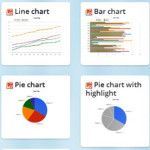

- #Simple linear regression equation bar sales how to
- #Simple linear regression equation bar sales code
R has the lm function built-in, and it is used to train linear models. You can train the model on the training set after the split. The caTools package is the perfect candidate for the job. Train/test split is the obvious next step once you’re done with preparation. We’ll keep this article strictly machine learning-based, so we won’t do any data preparation and cleaning. Title = "Applying simple linear regression to data",ĭo you find Box Plots confusing? Here’s our complete guide to get you started.Ī degree of skew seems to be present in all input variables, and the first three contain a couple of outliers. Geom_line(aes(x = x, y = yhat), size = 2) + Ggplot(data = simple_lr_data, aes(x = x, y = y)) + # Visualize input data and the best fit line Simple_lr_data$yhat <- simple_lr_predictions Simple_lr_predictions <- sapply(x, simple_lr_predict) # Apply simple_lr_predict() to input data # Define function for generating predictions Finally, input data and predictions are visualized with the ggplot2 package: # Calculate coefficientsī1 <- (sum((x - mean(x)) * (y - mean(y)))) / (sum((x - mean(x))^2)) The predictions can then be obtained by applying the simple_lr_predict() function to the vector X – they should all line on a single straight line. The coefficients for Beta0 and Beta1 are obtained first, and then wrapped into a simple_lr_predict() function that implements the line equation. A simple linear regression can be expressed as: It won’t be the case most of the time, but it can’t hurt to know. If you have a single input variable, you’re dealing with simple linear regression. We’ll ignore most of them for the purpose of this article, as the goal is to show you the general syntax you can copy-paste between the projects. You should be aware of these assumptions every time you’re creating linear models.

Normal distribution - the model will make more reliable predictions if your input and output variables are normally distributed.No collinearity - model will overfit when you have highly correlated input variables.No noise - model assumes that the input and output variables are not noisy - so remove outliers if possible.Linear assumption - model assumes that the relationship between variables is linear.
#Simple linear regression equation bar sales code
There’s still one thing we should cover before diving into the code – assumptions of a linear regression model: Coefficients are multiplied with corresponding input variables, and in the end, the bias (intercept) term is added. That’s how the linear regression model generates the output. If a coefficient is close to zero, the corresponding feature is considered to be less important than if the coefficient was a large positive or negative value. You can use a linear regression model to learn which features are important by examining coefficients. You’ll implement both today – simple linear regression from scratch and multiple linear regression with built-in R functions.

#Simple linear regression equation bar sales how to
Today you’ll learn the different types of R linear regression and how to implement all of them in R. Need help with Machine Learning solutions? Reach out to Appsilon. Basically, that’s all R linear regression is – a simple statistics problem. Chances are you had some prior exposure to machine learning and statistics.


 0 kommentar(er)
0 kommentar(er)
